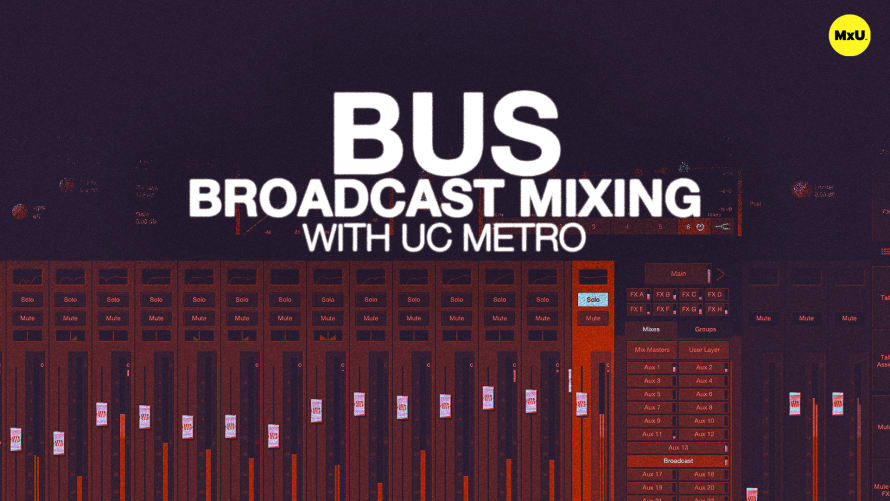
Premium
Sign up to watch Independent Broadcast Mixing with UC Metro and gain access to 500+ more Premium MxU videos.
Team
$99 .95
Per month, billed monthly.
For worship & tech teams
$83 .29
Per month, billed yearly.
For worship & tech teams
- Full course & video library
- Add your team
- Assign training
- Automated training workflows
- Create your own courses & videos
- Multi-campus support
- Organize with groups
Solo
$19 .95
Per month, billed monthly.
Just you, full content library
$16 .63
Per month, billed yearly.
Just you, full content library
- 889+ training videos
- Full course & video library
- Add your team
- Workflows, assignments, create courses & videos
More Premium Videos
Independent Broadcast Mixing with UC Metro
No actions available
A more advanced approach to remote broadcast mixing involves using UC Metro to provide a broadcast engineer with full control over all audio channels and parameters. By double patching the inputs. the broadcast engineer can independently adjust EQ, dynamics, effects, and more to create a flexible and powerful remote mixing setup.
Double Patching
Move beyond simple fader control to give the broadcast engineer full access to all channels.
- Double Patching: Channels 1-32 can be duplicated to channels 33-64, allowing independent processing for the broadcast mix.
- Separate Control: The broadcast engineer can now manage EQ, dynamics, and any other processing on each channel separately from the front-of-house mix.
Remote Mixing Setup
Jeff and Joe illustrate the differences between the front-of-house mix and the broadcast mix.
- Wider Mix: The broadcast mix can utilize effects, returns, and audience mics for a richer, more immersive sound.
- Tonality Differences: The broadcast engineer can make the mix brighter and more present, without the feedback concerns of a live PA system.
Practical Benefits
Some of the advantages of this setup include the flexibility it provides and the training opportunities it creates. The broadcast engineer can mix from anywhere with an internet connection, not just on-site. In addition, volunteers can practice mixing from remote locations and enhance their skills without impacting the live mix.
Categories
Audio
201
Premium Videos
Nothing added









